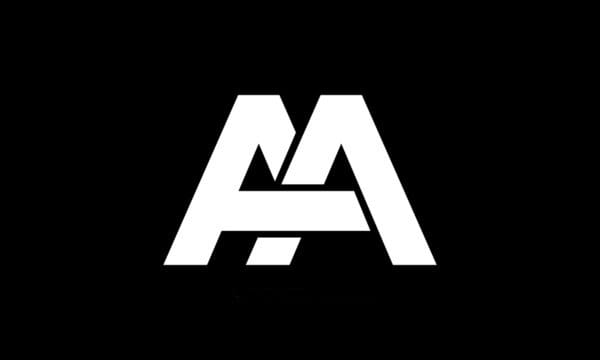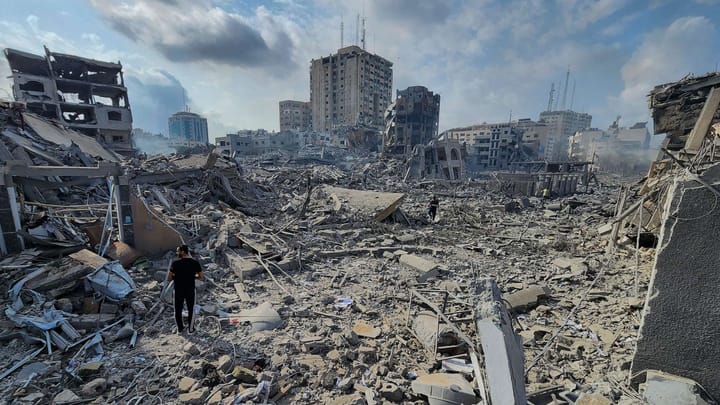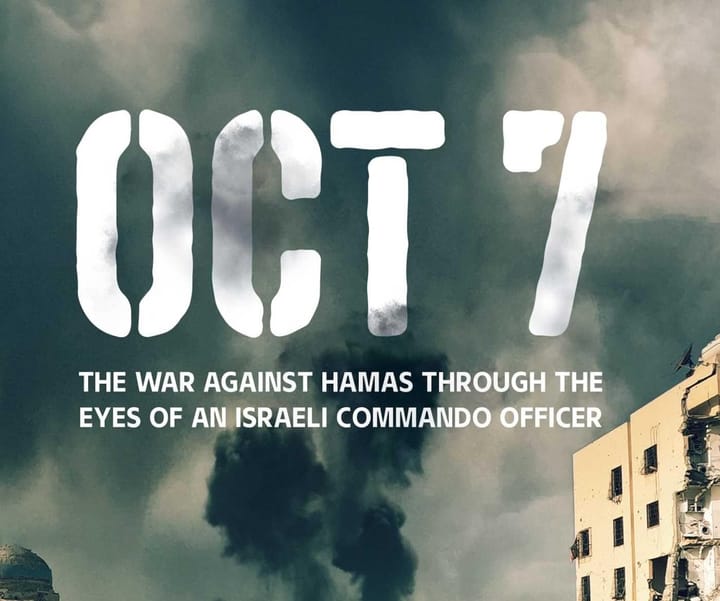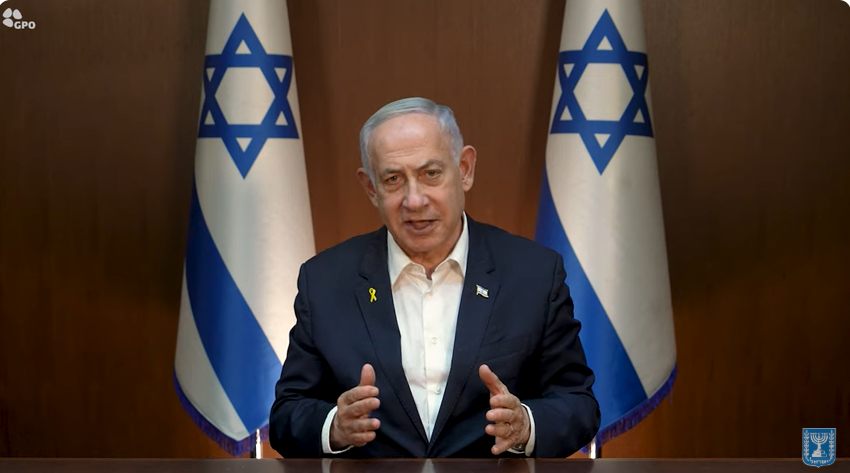Gazan Civilians are Hostages of Hamas: The Faceless Group Has Lots of War Crimes Charges to Answer For
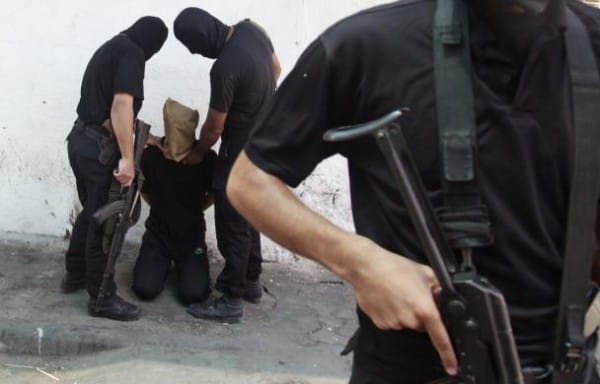
Protests are common in Israel because it is a democratic country. Israelis live a relatively more comfortable and affluent life than Palestinians in the Gaza Strip. However, Israelis protest much more often than Gazans. After a year of a bitter war that has taken over 40,000 Gazan lives, media footage shows an exhausted, displaced civilian population that moves from point to point. Yet, no one is ever shown uttering a single word against Hamas. We never see footage of Gazans protesting against Hamas or any militant group in Gaza. They all appear to have resigned to their fate and indifferent. Why is this so? This article examines how Hamas represses the people of Gaza and forces them to become human shields while starving them out of aid allowed into the Strip under the guise of raising enough money to fight Israel.
Totalitarianism in Gaza.
No one talks about Hamas.
Hamas is a faceless organization. Apart from a few political spokesmen familiar to viewers of international news outlets, Hamas is invisible. Then, there are the many militant groups in Gaza who give speeches in a variety of masks, concealing their identity.
On the other hand, the media spotlight and blame for all the suffering has been directed at one man who has become the face of Israel – Binyamin Netanyahu. The global media blamed Netanyahu more than any other human being over the past year. However, he represents a sovereign democratic country.
For some reason, no one seems willing to critique Hamas or Hezbollah – groups that repeatedly and indiscriminately fired rockets into Israel to kill Israelis and Palestinians alike.
The ability to turn the situation on its head and get the international media to blame Israel instead of Hamas is premised on totalitarianism attained through authoritarian measures.
Totalitarianism involves using terror and fear to demand subservience from all residents of a state to its central and dictatorial body. Hamas centralized power in a body of militant and clerical bodies. The justification and coordination ideology was – armed warfare and resistance to the state of Israel, which they branded as the "Occupier" or "Zionist Enemy."
Common hatred for Israel was at the very core of Hamas’ essence and existence.
Thus, anyone suspected of conspiring with Israel in any form was considered treasonous, and the only punishment for such a person was execution.
As history has shown, any totalitarian state that arises in modern times commences with an armed struggle. This creates a generation scarred by war and driven by a desire for revenge against the enemy that emerges from the bloody conflict. Such circumstances set the stage for the consolidation of power and the use of violence as a means to streamline and control the population.
In most cases, violence becomes so rampant, uncertainty rises, and sentiments rise. Through this, common hatred is aroused, and there is a demand for bloodshed and revenge. This is how totalitarian states are borne. Public executions become situations people cheer on because they feel someone must be held accountable for all their suffering. This creates the gap that totalitarian regimes exploit to hold onto power.
Reign of Terror (2007-2017): Faceless Organization, Public Executions
The Battle of Gaza fought between Hamas and Fatah in June 2007, made Hamas the de facto ruler of the Gaza Strip. However, it involved over 150 deaths and was cast as a major victory of Hamas' ideology, cast as "good" over the moderate position of Fatah to build a functional state.
Elections from the previous year, had cast Hamas as a change and reform party that was willing to fix the errors of Fatah which was beset with internal strife and infighting. Hamas’ message was driven by an Islamist ideology that sought to create a puritan statelet. Naturally, Hamas rendered every other thing from their opponents as forbidden and ungodly.
Ultimately, Hamas won the 2006 election, and it was disputed over that election which was disputed by Fatah. The international community saw this as a danger, but Hamas stood firm until the 2007 civil war occurred. This saw the arrest, execution, or expulsion of Fatah as a political entity in the Gaza Strip.

Fatah was, therefore, cast as an internal scapegoat – the epitome of Palestinians who seek to collaborate with Israel. It must be recalled that the 1996 Palestinian elections initiated by Arafat were boycotted by Hamas because of elements that required cooperation with Israel. Thus, a decade later, Hamas was willing to act out their intention of waging armed resistance against Israel.
Thus, the killing of the 150+ people in the Hamas-Fatah internal arm of the June 2007 conflict justified a purge. A symbolic moment came with the gruesome execution of Mohammed al-Swairki, who served in Fatah's Presidential Security Forces. He was thrown off a 15-floor building and crushed to death by masked men. This became the signature of Hamas executions, which involved masked executioners and a blindfolded victim whose hands were tied behind him.
Hamas set up a judiciary and a military court structure when they took over power after 2007. Their disdain for Fatah meant they refused to recognize any rules and standards from the Palestinian Authority. Under the Oslo Accords, any execution in Gaza was to be done through approval from the Palestinian Authority. Since Hamas did not recognize them, they relied on their own judicial and military court structure, which was based on Hamas’ own interpretation of Islamic texts and jurisprudence.
On the other hand, the media-fueled teachings often rendered Palestinians and Muslims who negotiated with Israel worse than Israelis. To them, the right thing to do was to use violence against Israel. This was spread in the Hamas-controlled media.
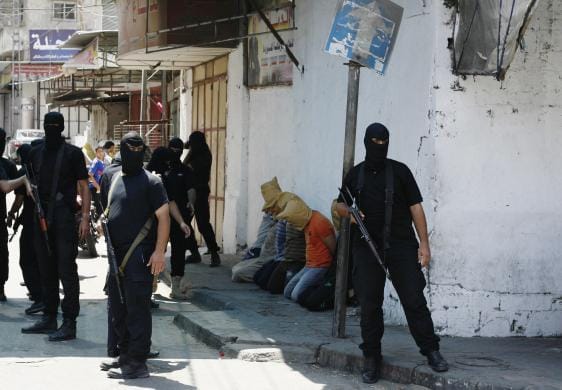
The goal of Hamas was to prepare the minds and bodies of the people of Gaza for war. To this end, the people became nothing more than hostages caught up in a Kafkaesque situation they could do nothing about.
In 2008, the First Gaza War broke out. A total of 115 alleged Israeli collaborators were arrested and incarcerated in Gaza’s central prison[1]. These were persons alleged to be providing information to the IDF on activities relating to the movement of Gazan militants. The Israeli Air Force struck the prison, and most of these prisoners escaped. Hamas judged this as an attempt by Israel to free collaborators. Thus, any one of the 115 alleged collaborators was shot on sight. Many were executed in the Shifa Hospital compound by Hamas militants in plain clothes.
A precedent was, therefore, set on how to deal with people alleged to have collaborated with Israel. Whether those executed were actual collaborators or not, the fear these executions stoked in people created a major upheaval in the population. Hamas' leaders justified this on the grounds that collaborators were acting against (1) the entire population and (2) against the resistance.[2].
Through this, the resistance to Israel was the official policy, and it was assumed that every Gazan was part of the resistance. This is the textbook example of a totalitarian regime. After the war, Fatah reported in early 2009 that Hamas had executed some 19 Fatah members and shot as many as 60 in the legs. All in all, Hamas shot as many as 32 of their political rivals, and Fatah reported that 181 of their members in Gaza were either executed or maimed permanently by being shot in the leg in point-blank range[3].
Since there was widespread anger relating to the war, the executions continued through 2010. Alleged collaborators were not put on trial – they were just taken out and shot. After that, this trend continued in the perennial wars between Hamas and Israel in 2012 and 2014. For each of these wars, Hamas executed alleged collaborators. Some had their bodies desecrated, while in other cases, the corpses were dragged through the streets.
In many cases, Fatah members are implicated – thereby crushing all forms of dissent. Thus, executions were for:
1. Alleged collaborators, and
2. Political rivals
The trend continued through 2017 when official executions became less common. On the other hand, honor killings and other forms of extrajudicial killings continued.
Totalitarianism, Absolute Fear
As Hamas used ruthless methods to kill its political rivals and alleged collaborators, they cemented their ideology as the official ideology of the Gaza Strip. Thus, dissent was eliminated, and everyone had to work with them.
There was also an entire generation that was raised under the Hamas doctrine. Anyone who was 10 years old in 2007 when Hamas took over was likely to have gone through their radical educational system. This was a system disconnected from the rest of the world and focused on hatred for Israel and preparation for armed conflict.
Hamas also maintained a sophisticated network of informants who functioned as secret police.[4]. This seems to be an imperative for every totalitarian state. This unit called the General Security Service involved a network of spies who reported on their neighbors to this unit. People who publicly criticized Hamas or participated in protests were monitored. They had files opened on them and the local authorities manipulated the people through this system.
Thus, life under Hamas was strongly controlled, and no one could fall out of line. The official Hamas line on issues was to be broadcast and acknowledged as the absolute truth. Dissent was not tolerated.
With a background of seeing the gruesome execution of convicted persons, no one in Gaza wanted to question or end up on the wrong side of the Hamas authorities.
Furthermore, public execution was a major reputational issue for the deceased and their families for generations. Therefore, the average Gazan was put in a position where they had to accept and work with Hamas. Indeed, a Gazan who was killed by Israeli firepower was going to be considered a hero. One who was executed by Hamas died a disgraced person. Thus, everyone had to comply with Hamas.
Artificial Poverty & Public Executions (2022-2023)
The economy of Gaza was centralized. Financial aid was allowed into the Strip, and essentials like cement and other things were allowed in. The central Hamas authorities, with a monopoly over violence, distributed the aid in the statelet.
First, they created a government and public sector which provided workers with paid jobs. This was one way they controlled the population. Everyone in these public sector roles had to comply with Hamas’ ideology of resistance against Israel as a formal and absolute policy. Failure to do so meant grave consequences – like accusations of sabotage.
Then, the salaries given were minimal, thereby forcing every worker to remain dependent on the central authorities for sustenance.
The private sector of Gaza was controlled by Hamas and its governing structure. As the de facto government, they were empowered to demand taxes and control activities of businesses. Thus, like any other totalitarian entity, every business had to comply with the ideology of resistance and support to Hamas’ cause.
Young men were incentivized to join the militant groups. That is because they were entitled to compensation and could gain certain lifetime payments for their families if they executed violent acts against Israel. Thus, the military was an attractive path for most young Gazan boys. This was justified by religious teachings, which Hamas also weaponized by promoting radical preachers over moderates.
Last but not least was the black market, which involved smuggling from Egypt through tunnels into the Gaza Strip. Indeed, there were families in different parts of Gaza who invested heavily in building tunnels from Gaza into Egypt. These groups could bring in goods illegally and sell them to Gazans at exorbitant prices.
As long as foreign aid money from Qatar and other places were coming in, there was always a greater demand for these smuggled goods and the price paid for them were higher.
Then October 7 & Hamas’ Hoarding of Humanitarian Aid
After the Gaza War started on October 8, 2023, Hamas maintained its monopoly on violence in Gaza to direct aid and resources to its central point. Through this, they could keep essentials like fuel to power their underground generators. They could also ensure their senior members and soldiers were well-fed while the people of Gaza remained impoverished.
The tradition of silencing dissenting voices continued in ways that are apparent. We have seen many videos of armed men jumping onto aid trucks to redirect them to preferred destinations once they enter the Gaza Strip. This shows how much Hamas is willing to keep its ideology in progress throughout the war.
IDF’s Capture of the Philadelphi Corridor, Price Hikes & Silencing of Dissenting Voices
When the Israeli war cabinet defied opposition and moved into Rafah, they captured the Philadelphi Corridor, the southernmost point of Gaza’s border with Egypt. This means Israel prevented all forms of smuggling from Egypt, thereby giving Hamas little to no options.
Now, Hamas is feeling pressured and needs to become innovative.
The method being used by Hamas is to resell the hoarded aid at extremely high prices to fund their war machine. They are, by extension, extorting money from the people to fund the war. This is justified by religious and political ideas.
However, many Gazans have not worked since the war began a year ago. Thus, they are put in a situation where they are closer to starvation. What is apparent is that the starvation is not caused by Israel but by the armed militias who redirected aid and now want to use sales of necessities to the Gazan public to keep the war effort going.
Conclusion
A lot of aid is being allowed into Gaza from the Israeli side of the border. However, this aid is actively hoarded by Hamas. The de facto militia that rules Gaza has used totalitarian methods to suppress the people of Gaza for the past two decades. They have used the public execution of alleged collaborators and political rivals to sow fear and terror in the masses. Thus, the average Gazan in today's war is faced with fire from two directions – one from the Israeli side and the other from their own local rulers, Hamas. Years of Hamas rule have sown a seed of fear and acceptance of their rule in most Gazans. As such, criticizing Hamas is out of reach for most of these civilians. This has made the Gazans public hostages of Hamas. Until Hamas reaches a point of surrender for change to occur, the people of Gaza will remain hostages of Hamas and other militia groups in Gaza.
[1] Ethan Bronner & Taghreed El-Khodary. "No Early End Seen to ‘All-Out War’ on Hamas in Gaza" New York Times. Published: December 29, 2024. Available at: https://www.nytimes.com/2008/12/30/world/middleeast/30mideast.html
[2] Donald Macintyre. "Hamas admits killing 'Israeli collaborators'" The Independent. Published: January 22, 2009. Available at: https://www.independent.co.uk/news/world/middle-east/hamas-admits-killing-israeli-collaborators-1488649.html
[3] Schanzer, Jonathan. “The Talibanization of Gaza: A Liability for the Muslim Brotherhood” Hudson Institute. Published: August 19, 2009. Available at: https://www.hudson.org/national-security-defense/the-talibanization-of-gaza-a-liability-for-the-muslim-brotherhood
[4] Adam, Rasgon & Ronen Bergman. "Secret Hamas Files Show How It Spied on Everyday Palestinians" New York Times. Published: May 13, 2024. Available at: https://www.nytimes.com/2024/05/13/world/europe/secret-hamas-files-palestinians.html

